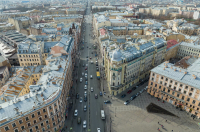Building
Unsurprisingly, the city’s first building is connected to its founder: it’s the cabin of Peter the Great, originally built in just three days in May 1703. Shielded by the Peter and Paul Fortress, it provided the emperor a vantage point on the surroundings – a crucial precaution at the time of the cabin’s foundation, for it happened during the Great Northern War. Over the centuries, a brick frame was erected around the original wooden structure, which eventually became a museum, now exhibiting some of Peter the Great’s actual belongings. Fun fact: at one time, students believed that if you visit the building’s chapel before an exam, you will definitely get a good grade.
Museum
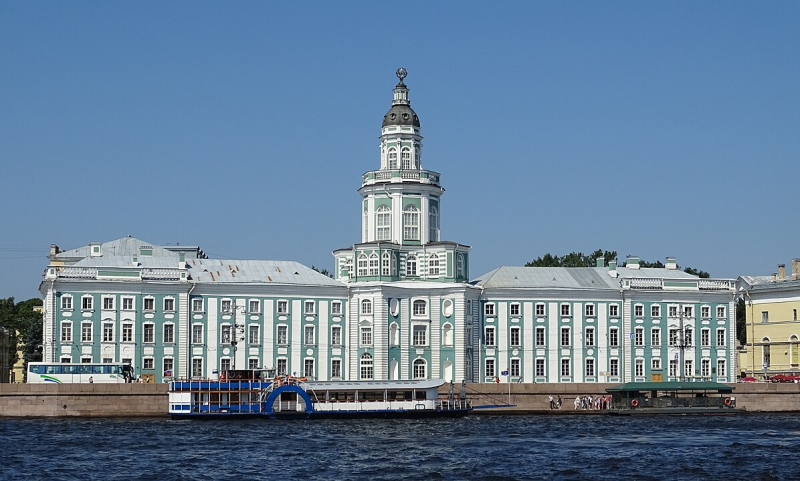
Kunstkamera. Credit: Ad Meskens / Wikimedia Commons / CC BY-SA 4.0
Nearly neighboring the Twelve Collegia building, Kunstkamera is the country’s first museum, which started as a “cabinet of curiosities” founded by order of Peter the Great in 1714. Now featured on the logo of the Russian Academy of Sciences (and part of it), the museum showcases the science of the 18th century with a somewhat disturbing accuracy – turn to our little expose to learn what we mean.
Monument
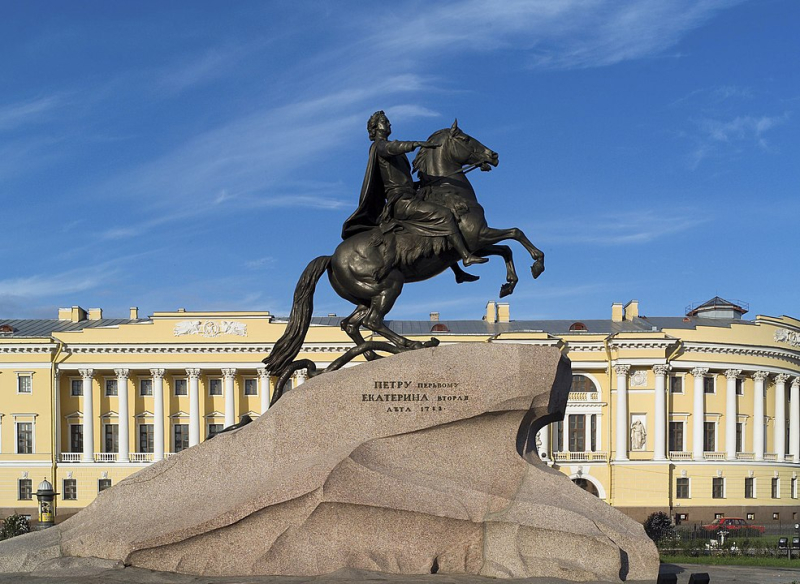
The Bronze Horseman. Credit: Godot13 / Wikimedia Commons / CC BY-SA 3.0
If you are looking for something not connected to Peter the Great… you’ll have to look a little further down the list because the Bronze Horseman, the city’s first monument, was erected based on the design by the French sculptor Étienne Maurice Falconet to honor its eccentric founder. Now a mainstay of all kinds of souvenirs, it faces the Neva River, with the emperor’s figure poised to prance toward it. Funnily enough, in Russian it’s known as the Copper Horseman (although it is made from bronze) – after the eponymous poem by Alexander Pushkin.
Interestingly, the first monument in the city created entirely by Russian sculptors is the Suvorov Monument near the Trinity Bridge. It commemorates Alexander Suvorov, a prominent Russian general (thus also making the monument the first in Russia to be erected for someone who isn’t a royal) of the early 19th century, who unfortunately didn’t live to see the monument.
Palace
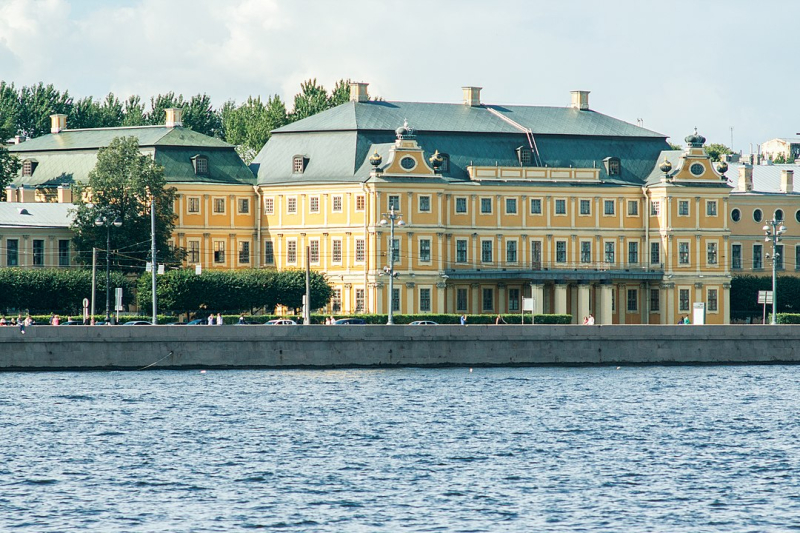
Menshikov Palace. Credit: Павел Лурье / Wikimedia Commons / CC BY-SA 4.0
The Menshikov Palace, built in the Petrine Baroque style, was founded in 1710 and completed in 1727, making it the first and thus oldest palace in the city. It was co-created by noted architects of the age, including Domenico Trezzini and Bartolomeo Rastrelli. Originally, it belonged to Alexander Menshikov, the St. Petersburg Governor General, who sadly didn’t get to enjoy his life there for long: in 1727, he was exiled to Siberia. Over the years, the building housed various military education institutions before finally becoming what it is now – a part of the Hermitage Museum, displaying restored interiors and art of the first third of the 18th century.
University
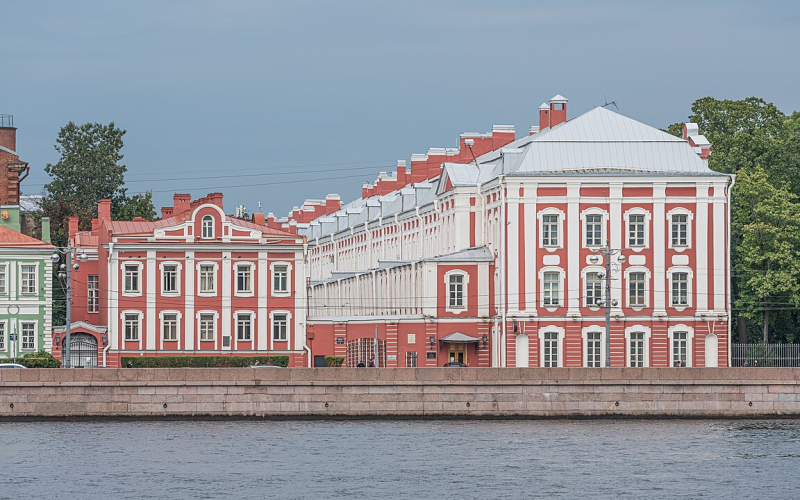
The Twelve Collegia building (St. Petersburg State University). Credit: A.Savin / Wikimedia Commons / FAL
Founded in 1724, St. Petersburg State University, often referred to as “the big university” by the locals, is the oldest not only in the city but in the whole country. Though its departments are spread over many new and historic sights in the city, the main building is the red Twelve Collegia edifice, located on Universitetskaya Emb. 9-11. The institution is an example of classical education, true to a long-standing academic tradition – in this respect, it is often compared and contrasted with the innovative approach of ITMO University, which builds upon tradition with cutting-edge technologies and educational practices. By the way, not that young itself, ITMO has recently celebrated its 124th birthday!
Train station
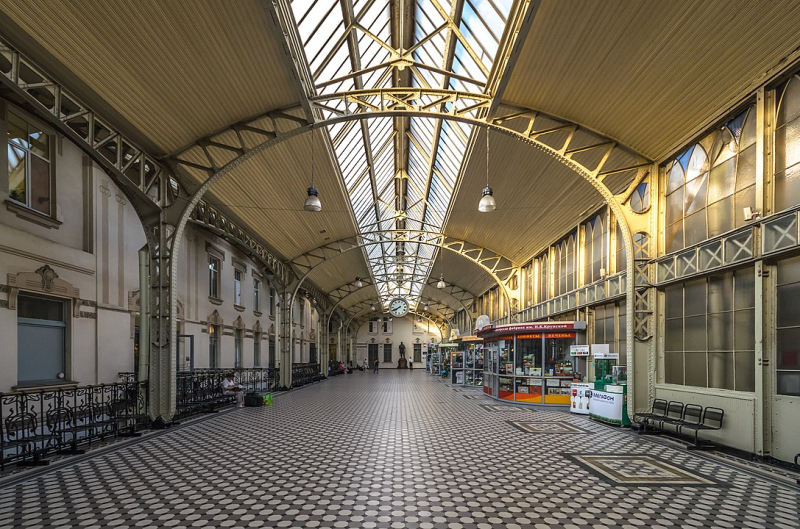
Inside the Vitebsk Station. Credit: Alex 'Florstein' Fedorov / Wikimedia Commons / CC BY-SA 4.0
A short walk from ITMO’s Lomonosova campus, you’ll find the railway station that’s oldest in the entire country (and still very much functioning) – the Vitebsk Station (or Vitebsky Vokzal), first opened in 1837. Very much looking the part, it appears to have been preserved from the 19th century, with its elegant exterior and a rather uncommon interior (if you’re used to modern train stations, that is).
Stay tuned for more exciting installments of this series!


